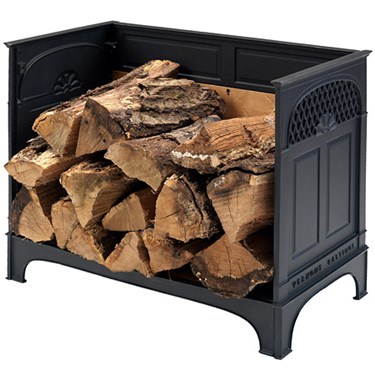Wood Burning Safety: Essential Precautions for Fireplaces and Stoves
This article discusses the importance of safety precautions when using wood burning fireplaces and stoves, including proper ventilation, clearing the area around the fireplace or stove, using dry and seasoned wood, regular chimney and flue maintenance, proper disposal of ashes, installing carbon monoxide detectors, and keeping children and pets safe.
Safety Precautions for Wood Burning in Fireplaces and Stoves
Importance of Proper Ventilation
Proper ventilation is essential when using wood-burning fireplaces and stoves to ensure efficient combustion and to prevent the buildup of harmful gases such as carbon monoxide. Inadequate ventilation can lead to poor indoor air quality, an increased risk of carbon monoxide poisoning, and potential fire hazards. Additionally, efficient ventilation helps reduce creosote accumulation, a highly flammable substance that can cause chimney fires. It also promotes better heating and minimizes the impact of wood smoke on the environment. For wood stove safety, regularly maintaining and cleaning wood stoves for safety purposes is crucial. For example, a well-ventilated fireplace ensures complete wood combustion and reduces the risk of harmful emissions and indoor air pollution.
Clearing the Area Around the Fireplace or Stove
Maintaining a clear area around the fireplace or stove is crucial to prevent the risk of accidental fires caused by nearby flammable materials. Cluttered surroundings can hinder the safe operation and maintenance of the fireplace or stove, increasing the risk of accidents. Furthermore, clearing the area facilitates safe access for regular cleaning, inspection, and maintenance of the fireplace or stove. Keeping the surrounding area clear reduces the risk of items catching fire from sparks or embers that may escape during use. For instance, keeping furniture, curtains, and other flammable items safe from the fireplace or stove can prevent fire hazards.
Using Dry and Seasoned Wood
Using dry and seasoned wood is vital for safely and efficiently operating wood-burning fireplaces and stoves. Wet or unseasoned wood can lead to reduced heating efficiency, increased creosote buildup, and potential chimney fires. Correctly seasoned wood produces more heat and less smoke, creating a cleaner and safer wood-burning experience. Additionally, using dry and seasoned wood minimizes the emission of harmful pollutants, promoting better indoor and outdoor air quality. For instance, burning dry wood reduces the release of particulate matter and toxic chemicals into the air, improving the overall air quality in and around the home.
Regular Chimney and Flue Maintenance
Regular maintenance of chimneys and flues is necessary to ensure proper venting and to prevent potential fire hazards. Neglecting chimney and flue maintenance can lead to the accumulation of creosote, which poses a significant risk to chimney fires. Inspections and cleanings help identify and address issues such as blockages, obstructions, and wear and tear that could compromise safety. Proper maintenance also contributes to the longevity and efficiency of the fireplace or stove system. For example, regular inspections and cleanings help identify and address any issues affecting the safe and efficient operation of the fireplace or stove, ensuring a reduced risk of fire hazards.
Proper Disposal of Ashes
Safely disposing of ashes from wood-burning fireplaces and stoves is crucial to prevent accidental fires. Ashes should be allowed to cool in a metal container before disposal, as hot embers can ignite other materials. Improper ash disposal, such as placing hot ashes in a combustible container or leaving them near flammable materials, can lead to fire hazards. Proper ash disposal also minimizes the risk of accidental burns and protects the environment from potential damage. For instance, ensuring that ashes are completely extinguished and adequately disposed of in a designated metal container reduces the risk of accidental fires and environmental harm.
Installing Carbon Monoxide Detectors
Installing carbon monoxide detectors is essential for early detection of this odorless, colorless gas, which can be produced by wood-burning fireplaces and stoves. Regular testing and maintenance of carbon monoxide detectors are necessary to ensure their proper functioning and reliability. Carbon monoxide detectors provide an additional layer of safety, alerting occupants to potentially dangerous levels of carbon monoxide in the home. Properly functioning detectors can save lives by providing early warnings of carbon monoxide buildup, allowing for timely evacuation and intervention. For example, installing carbon monoxide detectors on every level of the home, especially in areas near the fireplace or stove, can provide early warnings of potential carbon monoxide exposure, ensuring the safety of occupants.
Keeping Children and Pets Safe
Supervision is vital to ensure the safety of children and pets around wood-burning fireplaces and stoves. Physical barriers, such as safety gates and fireplace screens, can help prevent direct contact with the fireplace or stove, reducing the risk of burns and injuries. Educating children about the potential dangers of fireplaces and stoves and establishing clear safety rules can help minimize risks. Proper training and supervision of pets, as well as the use of deterrents, can prevent them from getting too close to the fireplace or stove. For instance, teaching children about fire safety and establishing clear boundaries around the fireplace or stove area can minimize the risk of accidents and injuries.
Conclusion
Adhering to safety precautions is critical in preventing accidents and ensuring a secure wood-burning experience. Proper ventilation, clear surroundings, the use of dry wood, regular maintenance, safe ash disposal, carbon monoxide detection, and measures to keep children and pets safe are all essential for safe and efficient wood burning in fireplaces and stoves. Prioritizing safety and responsible wood-burning practices is paramount to enjoying the warmth and ambiance of fireplaces and stoves without compromising safety.


/1003/site-assets/logo.png)


